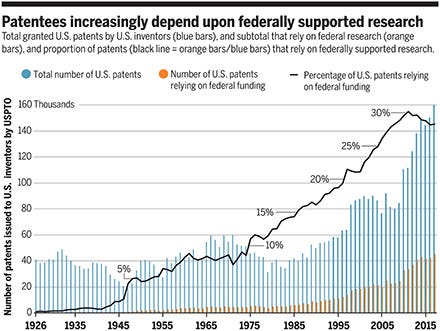A quantitative analysis shows that almost a third of patents in the U.S. rely on federal research funding
6/20/2019, by Linda Vu
Government-funded research increasingly fuels innovation was originally published in Berkeley Master of Engineering on Medium, where people are continuing the conversation by highlighting and responding to this story.

